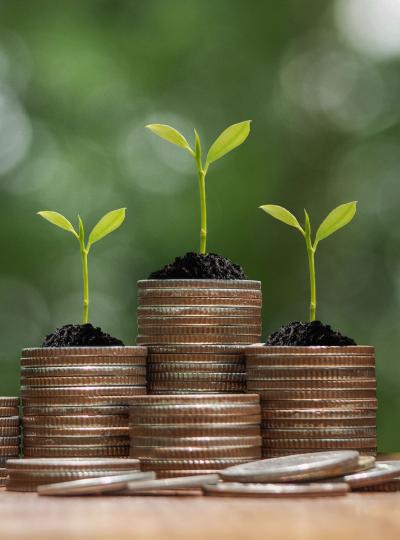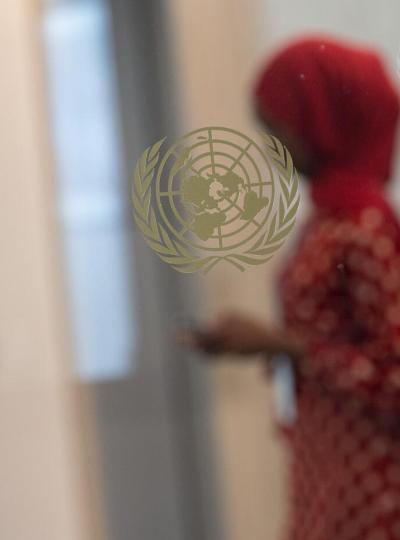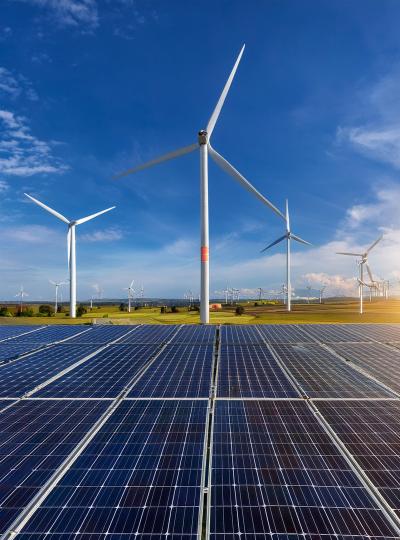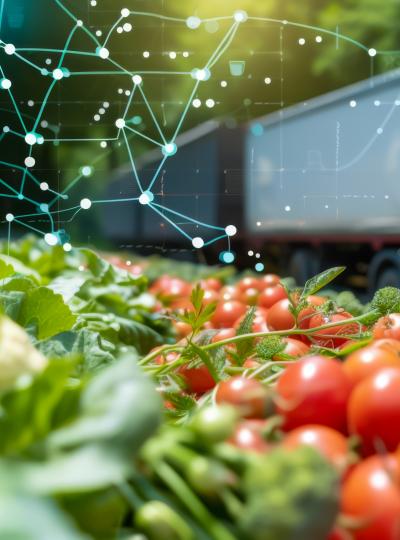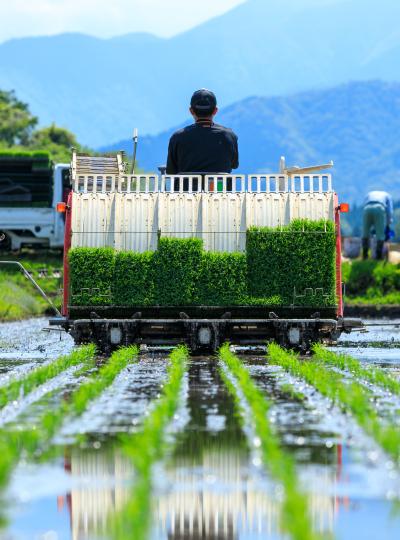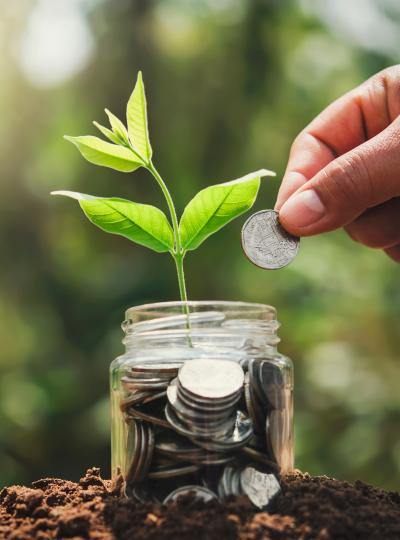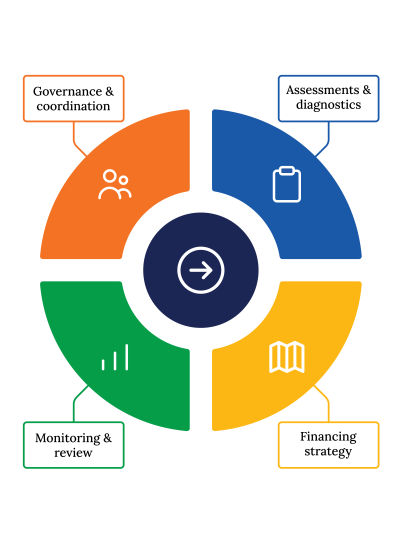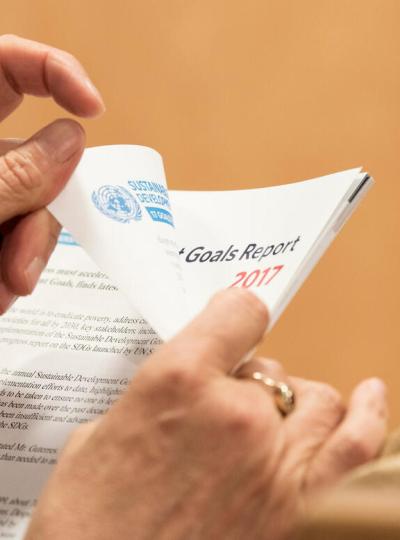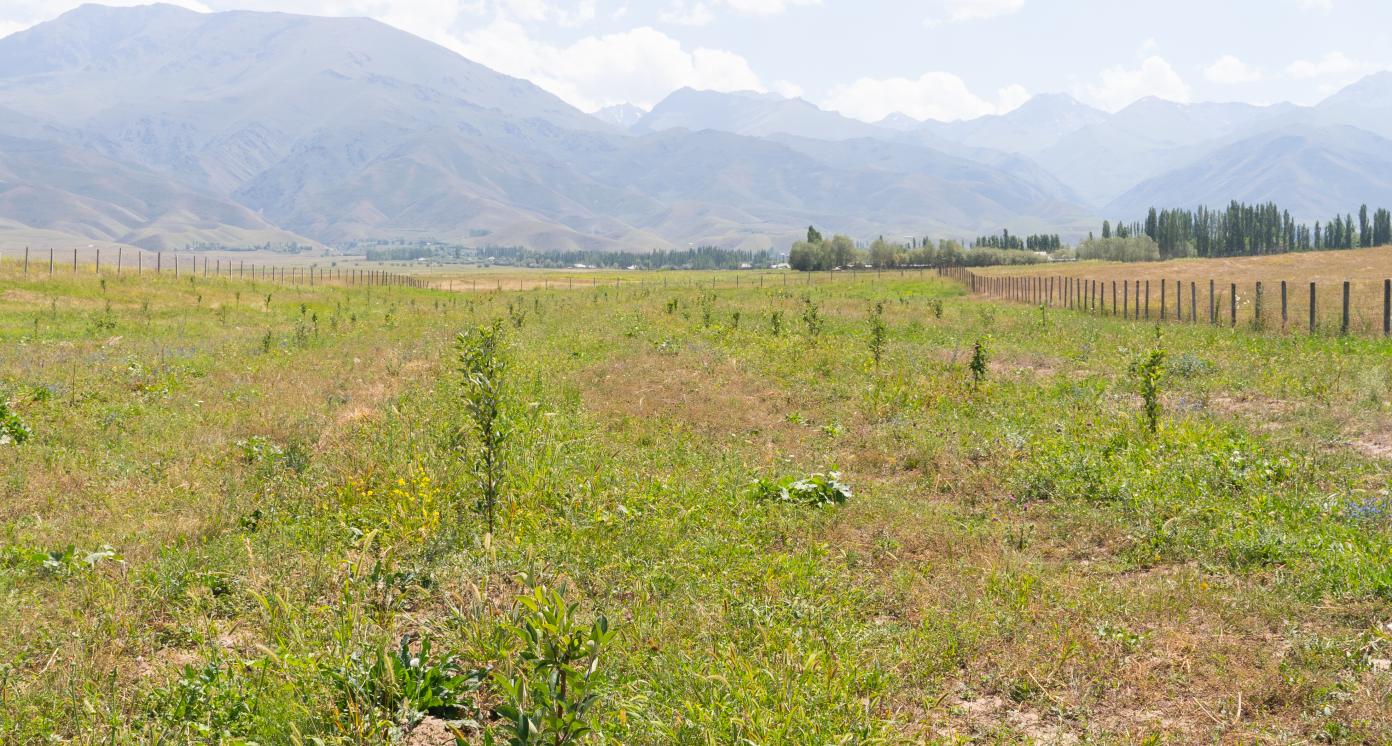Processing of Horticultural Crops
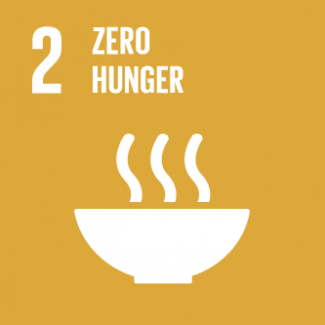
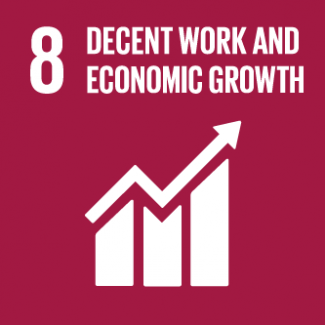
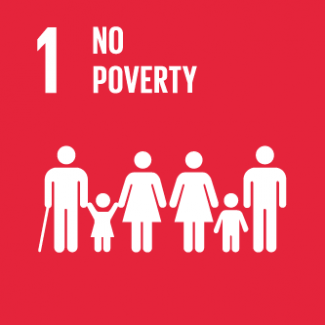
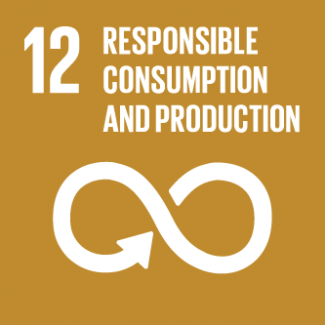
Business Model Description
Invest in food processing facilities and clusters of key crops, including vegetables (potatoes, beet), fruits (apricots, berries, grapes, plumps, apples), and nuts (walnut, almond, pistachio), produce high value-added products such as sauces, dry fruit, freeze-dried fruit, natural drinks (kvass and compotes), and juices, and sell the output in the domestic and foreign markets, including China, Arab states, countries-members of Commonwealth of Independent States (CIS) and Eurasian Economic Union (EEU).
Expected Impact
Improve food security by supporting the production of domestic value-added products, increase demand for local agricultural production, and enhance revenue growth for local processors.
How is this information gathered?
Investment opportunities with potential to contribute to sustainable development are based on country-level SDG Investor Maps.
Disclaimer
UNDP, the Private Finance for the SDGs, and their affiliates (collectively “UNDP”) do not seek or solicit investment for programmes, projects, or opportunities described on this site (collectively “Programmes”) or any other Programmes, and nothing on this page should constitute a solicitation for investment. The actors listed on this site are not partners of UNDP, and their inclusion should not be construed as an endorsement or recommendation by UNDP for any relationship or investment.
The descriptions on this page are provided for informational purposes only. Only companies and enterprises that appear under the case study tab have been validated and vetted through UNDP programmes such as the Growth Stage Impact Ventures (GSIV), Business Call to Action (BCtA), or through other UN agencies. Even then, under no circumstances should their appearance on this website be construed as an endorsement for any relationship or investment. UNDP assumes no liability for investment losses directly or indirectly resulting from recommendations made, implied, or inferred by its research. Likewise, UNDP assumes no claim to investment gains directly or indirectly resulting from trading profits, investment management, or advisory fees obtained by following investment recommendations made, implied, or inferred by its research.
Investment involves risk, and all investments should be made with the supervision of a professional investment manager or advisor. The materials on the website are not an offer to sell or a solicitation of an offer to buy any investment, security, or commodity, nor shall any security be offered or sold to any person, in any jurisdiction in which such offer would be unlawful under the securities laws of such jurisdiction.
Country & Regions
- Kyrgyzstan: Jalal-Abad Oblast
- Kyrgyzstan: Issyk-Kul Oblast
- Kyrgyzstan: Chui Oblast
- Kyrgyzstan: Osh Oblast
Sector Classification
Food and Beverage
Development need
Kyrgyzstan is highly dependent on imported food due to low productivity and output in the food sector. The country is a net importer of meat and depends on imports of fats, oil, and sunflower seeds, over 90% of which comes from Russia, Belarus or Ukraine. In 2023, 30% of the population lived below the poverty line, spending over 60% of the income on basic food needs (1, 2, 3, 4).
Policy priority
The Programme for the development of the food and processing industry during 2023-2027 aims to ensure food security, efficient use of raw materials, provision of government lending, and attracting investments in the sector. The national development strategy until 2026 emphasizes the role of medium and large processing complexes and logistics centres for boosting export (5, 6).
Gender inequalities and marginalization issues
The gender-segregated data on land ownership is limited and outdated but reveals that women report themselves as agricultural land owners less often than men. Despite equal legal rights to land resources between men and women, women tend to be excluded from land governance and decision-making (7).
Investment opportunities introduction
In 2023, the food industry, including beverage and tobacco production, has generated approximately USD 830 million in output. The main opportunities in the food sector lie in sugar production, tobacco-fermentation plants, horticultural processing, meat processing, and logistics centres (8, 9).
Key bottlenecks introduction
Climate change, affecting agricultural outputs and prices, supply-chain shocks caused by the COVID-19 pandemic and conflict between Eastern European countries, which are major food importers to Kyrgyzstan, significantly affected the development of food and beverage sector in recent years (1, 4, 10).
Food and Agriculture
Development need
Post-harvest losses remain significant, with 30-40% of produce lost during collection, transportation, and storage processes. Despite being a livestock country, 87% of pastures in Kyrgyzstan are degraded at least one season per year. Limited access to high-quality seeds contributes to low seed replacement rates, resulting in reduced yields of fodder and feed crops (11, 12).
Policy priority
Nationally Determined Contributions (NDC) target reducing agricultural greenhouse gas emissions by optimizing livestock numbers, enhancing pedigree stock, expanding organic crop farming, and increasing manure use as fertilizer. The 2024-2028 Green Economy Programme promotes resource-efficient, eco-friendly farming (13, 14).
Gender inequalities and marginalization issues
The rural population predominates in Kyrgyzstan, with nearly 65% living in rural areas. Of these, 20% are engaged in agriculture and the majority work informally. In 2021, one in three, or 35%, informally employed women worked in agriculture (11, 15).
Investment opportunities introduction
In 2023, foreign direct investments in agriculture amounted to USD 667,000. Bank loans in the sector increased by 11.6% in 2024, reaching KGS 47 billion (USD 649 million). There are opportunities to invest in storage facilities, berry growing, fish breeding, dairy farms and cheese production, trout farming, and organic production (16, 17, 18).
Key bottlenecks introduction
Low levels of skills in land management, harvest techniques, animal husbandry and veterinary practices, as well as obsolete agricultural equipment significantly hinder the sector’s development (11).
Processed Foods
Pipeline Opportunity
Processing of Horticultural Crops
Invest in food processing facilities and clusters of key crops, including vegetables (potatoes, beet), fruits (apricots, berries, grapes, plumps, apples), and nuts (walnut, almond, pistachio), produce high value-added products such as sauces, dry fruit, freeze-dried fruit, natural drinks (kvass and compotes), and juices, and sell the output in the domestic and foreign markets, including China, Arab states, countries-members of Commonwealth of Independent States (CIS) and Eurasian Economic Union (EEU).
Business Case
Market Size and Environment
< USD 50 million
In 2022, Kyrgyzstan's total industrial output reached KGS 61.9 billion (USD708.8 million), with KGS 1.1 billion (USD12.4 million) generated from the production of processed and canned fruits and vegetables (6).
Indicative Return
20% - 25%
The National Investments Agency identified an investment project of a fruit processing plant and storage facility with an internal rate of return (IRR) of 30.14% at the end of fifth year (21).
Another project aimed at production of dry fruits and subsequent export is estimated to yield 21.52% at the end of the fifth year (22).
Investment Timeframe
Short Term (0–5 years)
The National Investments Agency under the President of the Kyrgyz Republic identified an investment project of a fruit processing with a payback period of 2.35-2.59 years (21, 22).
Ticket Size
< USD 500,000
Market Risks & Scale Obstacles
Business - Supply Chain Constraints
Market - High Level of Competition
Market - Highly Regulated
Impact Case
Sustainable Development Need
In the total volume of agricultural production in January-March 2024, crop production accounted for only 1.7% (23).
Kyrgyzstan continues relying on imported food for food security. In 2023, it imported 1.5 times more agricultural products than exported (24, 25, 26).
In 2022, the proportion of the population unable to afford a healthy diet in Kyrgyzstan was 35.9%, the highest in Central Asia (27)
Gender & Marginalisation
Women participate in family farms and cooperatives and work as small-scale fruit and vegetable traders and in home-based micro-sized processing and food-preserving enterprises. They face significant barriers to entrepreneurship, including administrative and limited access to credit (28).
In 2022, youth unemployment among individuals aged 15 to 28 reached 8.4%. Meanwhile, employment in the agriculture, forestry, and fisheries sector has continued to decline; by 2018, only 115,700 young people were employed in this sector, compared to a total labour force of 2,543,700 (29, 41, 42).
Poverty is unevenly distributed across the country, with about 75.0% of the poor living in rural areas. Their major source of income is small-scale household crop production (i.e., fruits and vegetables) and livestock production (30).
Expected Development Outcome
Processing of horticultural crops increases the volume of domestically produced fresh vegetables and fruit as a result of heightened demand from food processors.
Processing of horticultural crops increases employment of the rural population, particularly women, in the processing industry and enhances value-addition to boost GDP.
Processing of horticultural crops lowers dependence on imported food products and promotes a healthy diet for the population.
Gender & Marginalisation
Processing of horticultural crops enhances better financial and entrepreneurial outcomes for women by providing employment opportunities.
Processing of horticultural fruits provides an opportunity for enhanced participation of youth in agriculture.
Processing of horticultural fruits contributes to poverty reduction through better employment and income for small- and medium-sized farmers.
Primary SDGs addressed

2.1.1 Prevalence of undernourishment
The proportion of the population with undernourishment in 2022 amounted to 47.35% (31).

8.2.1 Annual growth rate of real GDP per employed person
In 2022, the annual growth rate of real GDP per employed person was 109.27% (32).
110 by 2028 (14).
Secondary SDGs addressed


Directly impacted stakeholders
People
Gender inequality and/or marginalization
Corporates
Public sector
Indirectly impacted stakeholders
Planet
Outcome Risks
Increased demand for fruits and vegetables may lead to increased demand for irrigation water, thereby worsening water shortage problems.
Impact Risks
Climate change and adverse natural events may reduce the yield of fruit orchards and vegetable gardens, which may reduce the intended positive impact of this business model (6).
Local small- and medium-sized producers may be unable to compete with large investors, leading to a reduction in their numbers, hence, hindering the intended impact of poverty reduction.
Continued increased import of cheap food products to Kyrgyzstan may reduce demand for domestic products, thereby curbing the intended impact of expanding the volume of domestically-produced crops.
Impact Classification
What
Increased processing of horticultural crops will reduce crop losses, increase farmers' income, improve food security, and reduce dependence on imports.
Who
The public, local farmers, particularly women and youth, processors, and the government benefit from increased demand for fruit and vegetables, enhanced production and better access to food.
Risk
Climate change, competition with large investors, and continued import of cheap horticultural products from other countries may limit the impact of the processing of horticultural crops.
Contribution
Processing of horticultural crops can lead to improved export opportunities due to long shelf life.
How Much
Sales of fruits and vegetables will increase by 10-20% by 2024 (6).
Impact Thesis
Improve food security by supporting the production of domestic value-added products, increase demand for local agricultural production, and enhance revenue growth for local processors.
Enabling Environment
Policy Environment
The Program for the Development of the Food and Processing Industry of the Kyrgyz Republic for 2023-2027, 2023: using cluster development identifies main priorities, actions and indicators for the development of Horticultural Crops Processing (6).
The National Development Strategy of Kyrgyz Republic for 2018–2040, 2018: aims to provide the population with high-quality food, implement an international standard quality control system for processing agricultural products, and supply raw materials for processing (5).
The National Development Programme until 2026, 2021: sets a strategic goal to improve food security in the country and advance the development of medium and large processing complexes of agricultural products (33).
Financial Environment
Financial incentives: The government provides preferential loans to processors of horticultural crops under the programme of lending to the agro-industrial complex with a term of 3 to 5 years and an interest rate of 6% p.a. (38).
Fiscal incentives: Components imported into Kyrgyzstan for producing and assembling agricultural machinery and vehicles are exempt from VAT if used by the manufacturer for production. Additionally, the profits of agricultural producers and agricultural cooperatives are exempt from taxation (39).
Regulatory Environment
Technical Regulations of the Customs Union "On the Safety of Food Products", 2013: establishes uniform sanitary and epidemiological requirements for food products that must be observed by all food industry enterprises within the Eurasian Economic Union (34).
Law No. 183 On food security of the Kyrgyz Republic, 2008: establishes the main directions in the field of ensuring food security of the Kyrgyz Republic, outlines the main directions of the government support, including subsidies, guarantees, financing of research programs and others (35).
Law No. 66 On investments, 2003: establishes the basic principles of the state investment policy, providing fair, equal legal treatment to investors and guaranteeing the protection of their investments in the economy of the Kyrgyz Republic (36).
Law No. 166 On the development of agriculture in the Kyrgyz Republic, 2009: regulates entities' relations to develop the agro-food sector and identifies the production of agricultural products to ensure food security as one of the main areas of government support (37).
Marketplace Participants
Private Sector
OSKO, Farmer’s Organic Garden, Agroproduct Asia, Bai Elim, Ecoproduct Asia.
Government
Ministry of Agriculture, Water Resources and Processing Industry, Ministry of Economy and Commerce, National Investment Agency under the President.
Multilaterals
Food and Agriculture Organization (FAO), Asian Development Bank (ADB), United Nations Development Programme (UNDP), European Bank for Reconstruction and Development (EBRD).
Non-Profit
Association for the Development of the Agro-Industrial Complex, Association of Berry Growerss, U.S. Agency for International Development (USAID).
Target Locations
Kyrgyzstan: Jalal-Abad Oblast
Kyrgyzstan: Issyk-Kul Oblast
Kyrgyzstan: Chui Oblast
Kyrgyzstan: Osh Oblast
References
- (1) World Food Programme. 2021. Food Security Situation in the Kyrgyz Republic. https://www.fsinplatform.org/sites/default/files/resources/files/WFP-0000124521.pdf
- (2) UNDP. 2023. Development Finance Assessment. https://www.undp.org/kyrgyzstan/publications/development-finance-assessment-kyrgystan
- (3) National Statistical Committee of the Kyrgyz Republic. 2023. Number of households with expenditure below subsistence level. https://stat.gov.kg/en/statistics/download/dynamic/538/
- (4) World Bank Group. 2022. Agrifood trade and food security in Central Asia: Possible implications of the war in Ukraine. https://documents1.worldbank.org/curated/en/099614301182328659/pdf/IDU099aa8f43031360476b0ba0e0c5517feb727f.pdf
- (5) The Government of the Kyrgyz Republic. 2018. National Development Strategy of the Kyrgyz Republic for 2018-2040. https://www.fao.org/faolex/results/details/en/c/LEX-FAOC203822/
- (6) Правительство Кыргызской Республики. 2023. Программа развития пищевой и перерабатывающей промышленности Кыргызской Республики на 2023-2027 годы с применением кластерного развития. https://cbd.minjust.gov.kg/53-339/edition/1035/ru
- (7) CIFOR-ICRAF, IFAD. 2023. Women's Land Rights in the Kyrgyz Republic. https://www.cifor-icraf.org/publications/pdf_files/Books/Socio-legal-review-Kyrgyz.pdf
- (8) National Statistical Committee of the Kyrgyz Republic. 2023. Volume of industrial goods production by types of economic activity. https://stat.gov.kg/en/opendata/category/361/
- (9) Национальное агенство по инвестициям при Президенте Кыргызской Республики. 2021. Инвестиционные проекты в сфере сельского хозяйства. https://invest.gov.kg/Инвестиционные-проекты-в-сфере-сельхоз-РУС.pdf
- (10) Asian Development Bank. 2020. COVID-19 pandemic impacts on food security in Central and West Asia. Key issues and strategic options. https://www.adb.org/sites/default/files/publication/656091/cwwp-009-covid-19-impacts-food-security.pdf
- (11) IFAD. 2021. COSOP results review. https://www.ifad.org/en/w/corporate-documents/regions-countries/kyrgyzstan-cosop-results-review-2021
- (12) IFAD, FAO. 2023. Low carbon and resilient livestock development in Kyrgyzstan. https://openknowledge.fao.org/server/api/core/bitstreams/3e8893c7-5e23-4890-8b38-b1d65538322b/content#:~:text=The%20new%20IFAD%20project%20would,reducing%20the%20overall%20quantity%20needed.
- (13) The Government of the Kyrgyz Republic. 2021. Updated Nationally Determined Contributions 2021. https://unfccc.int/sites/default/files/NDC/2022-06/%D0%9E%D0%9D%D0%A3%D0%92%20ENG%20%D0%BE%D1%82%2008102021.pdf
- (14) Министерство Кыргызской Республики. 2024. Программа развития зеленой экономики в Кыргызской Республике на 2024-2028 годы (Проект). https://mineconom.gov.kg/froala/uploads/file/3bd5db922cf87fc28a0f3cbeced8e2bbe286956c.pdf
- (15) UN Women. 2023. Sustainable Development Goals and Gender in the Kyrgyz Republic. https://data.unwomen.org/sites/default/files/documents/Publications/2023/Kyrgyz-SDG-gender.pdf
- (16) National Statistical Committee of the Kyrgyz Republic. 2023. Foreign Investment in 2023. https://stat.gov.kg/en/statistics/download/operational/1763/
- (17) National Bank of the Kyrgyz Republic. 2024. Trends of banking sector development. https://www.nbkr.kg/index1.jsp?item=80&lang=RUS
- (18) National Investments Agency under the President of the Kyrgyz Republic. 2021. Investment projects. https://invest.gov.kg/ru/2021/12/07/test/
- (19) Bai Elim Company. 2024. [Home page]. https://baielim.kg/ "20) Национальное агентство по инвестициям при Президенте Кыргызской Республики. 2022. Инвестиционный паспорта Кыргызской Республики. https://invest.gov.kg/wp-content/uploads/2022/03/Презентация-по-инвест-паспортам-КР-38.pdf" "21) Национальное агентство по инвестициям при Президенте Кыргызской Республики. 2022. Проект по строительству цеха по переработке сливы, яблок. Хранение свежих персиков, черешни, абрикосов. Многопрофильный сельскохозяйственный коммерческий кооператив ""Бай Дыйкан Ала-Бука"". https://invest.gov.kg/wp-content/uploads/2021/12/15.pdf" "22) Национальное агентство по инвестициям при Президенте Кыргызской Республики. 2022. Проект по переработке абрикоса. Общество с ограниченной ответствненостью ""Эко-золотой сад"". https://invest.gov.kg/wp-content/uploads/2021/12/8.pdf" "23) Национальный статистический комитет Кыргызской Республики. 2024. Информационный бюллетень Кыргызской Республики по продовольственной безопасности и бедности. https://stat.gov.kg/media/publicationarchive/2f7634b1-1cc4-4d18-a6bf-2b40892e71c3.pdf"
- (24) Правительство Кыргызской Республики. 2021. Концепция кластерной политики аграрного развития Кыргызской Республики на основе специализации по областям на 2021-2025 годы. https://sady.kg/wp-content/uploads/2023/08/koncepcija_klasternoj_politiki.pdf "25) Национальный статистический комитет Кыргызской Республики. 2023. Импорт товаров по видам экономической деятельности. https://stat.gov.kg/ru/statistics/download/dynamic/986/" "26) Национальный статистический комитет Кыргызской Республики. 2023. Экспорт товаров по видам экономической деятельности. https://stat.gov.kg/ru/statistics/download/dynamic/985/"
- (27) FAO. 2024. The State of Food Security and Nutrition in the World 2024. https://openknowledge.fao.org/server/api/core/bitstreams/d5be2ffc-f191-411c-9fee-bb737411576d/content
- (28) ADB. 2019. Kyrgyz Republic: Country Gender Assessment. https://www.adb.org/sites/default/files/institutional-document/546966/kyrgyz-republic-country-gender-assessment-2019.pdf
- (29) Национальный статистический комитет Кыргызской Республики. 2020. Молодежь в Кыргызской Республике 2014-2018. https://stat.gov.kg/media/publicationarchive/38e3432d-6a3d-4613-8a3f-9d87fd4621ac.rar
- (30) World Bank. 2023. Kyrgyz Republic. https://data.worldbank.org/country/kyrgyz-republic
- (31) Национальный статистический комитет Кыргызской Республики. 2022. Распространенность недоедания (показатель 2.1.1). https://sustainabledevelopment-kyrgyzstan.github.io/2-1-1/
- (32) Национальный статистический комитет Кыргызской Республики. 2022. Ежегодные темпы роста реального ВВП на каждого занятого (показатель 8.2.1). https://sustainabledevelopment-kyrgyzstan.github.io/8-2-1/
- (33) Кабинет Министров Кыргызской Республики. 2021. Национальная программа развития Кыргызской Республики до 2026 года. https://faolex.fao.org/docs/pdf/kyr208595.pdf
- (34) Eurasian Economic Commission. 2024. Technical Regulations of the Customs Union "On the Safety of Food Products". https://eec.eaeunion.org/comission/department/deptexreg/tr/PischevayaProd.php
- (35) Правительство Кыргызской Республики. 2008. Закон Кыргызской Республики от 4 августа 2008 года №183 О продовольственной безопасности Кыргызской Республики. https://cbd.minjust.gov.kg/202397/edition/1244333/ru
- (36) Правительство Кыргызской Республики. 2003. Закон Кыргызской Республики от 27 марта 2003 года №66 Об инвестициях в Кыргызской Республике. https://cbd.minjust.gov.kg/1190/edition/8226/ru
- (37) Правительство Кыргызской Республики. 2009. Закон Кыргызской Республики от 26 мая 2009 года №166 О развитии сельского хозяйства Кыргызской Республики. https://cbd.minjust.gov.kg/202555/edition/1213000/ru
- (38) Кабинет Министров Кыргызской Республики. 2022. Распоряжение от 16 марта 2022 года №120-р. https://cbd.minjust.gov.kg/219019/edition/4826/ru
- (39) Правительство Кыргызской Республики. 2023. Перечень налоговых льгот, подлежащих оценке эффективности налоговых льгот. https://cbd.minjust.gov.kg/43-112/edition/1286436/ru
- (40) Кабинет Министров Кыргызской Республики. 2022. Программа по привлечению инвестиций в Кыргызскую Республику на 2022-2026 годы. https://cbd.minjust.gov.kg/159444/edition/1186845/ru
- (41) Национальный статистический комитет Кыргызской Республики. 2025. Уровень общей безработицы в возрасте 15-28 лет по территории и полу. https://stat.gov.kg/media/files/bc442f3c-fde7-45e4-b28e-7157176c1311.xlsx
- (42) Национальный статистический комитет Кыргызской Республики. 2023. Рабочая сила и лица, не входящие в состав рабочекй силы. https://stat.gov.kg/ru/opendata/category/4934/
- (43) Национальный статистический комитет Кыргызской Республики. 2021. Социально-экономическое развитие Ошской области. https://stat.gov.kg/ru/oshskaya-oblast/
- (44) Национальный статистический комитет Кыргызской Республики. 2024. Социально-экономическое развитие Иссык-Кульской области. https://stat.gov.kg/media/files/eed284e6-4a1c-4d5b-9d13-da5b4acd38d7.pdf
- (45) Национальный статистический комитет Кыргызской Республики. Институт статистических исследований и повышения квалификации. 2020. Аналитическая записка. Особенности и перспективы развития сельского хозяйства Кыргызской Республики. https://stat.gov.kg/media/files/67cd4b04-154b-473c-9556-534d36e630b5.doc

